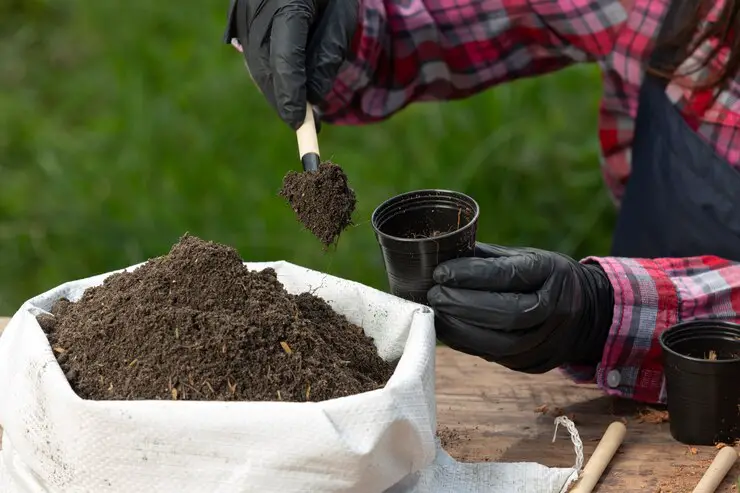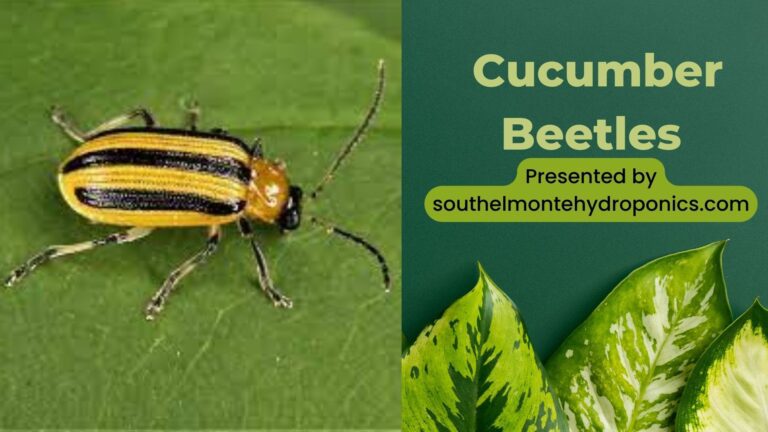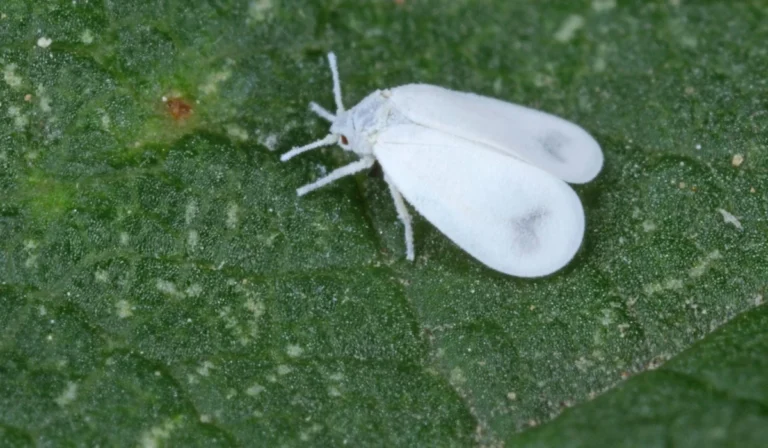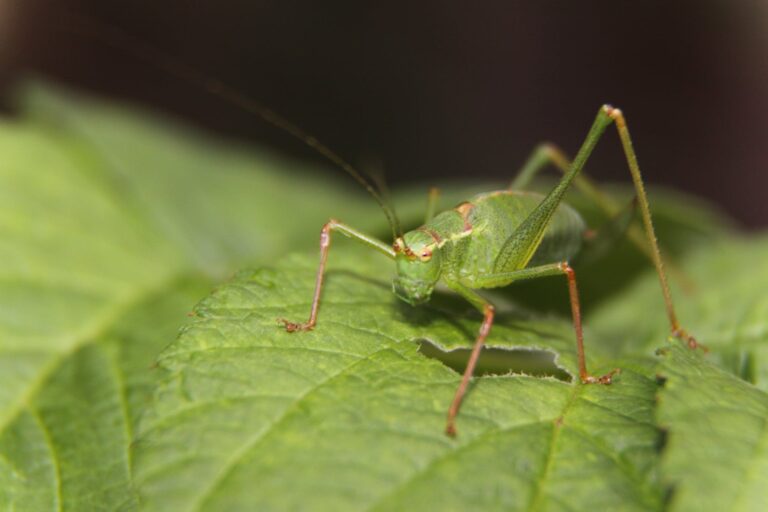Combatting Squash Bugs: Tackling Flat, Destructive Pests
Table of Contents
Header 1: Understanding the Threat of Squash Bugs
Squash bugs (Anasa tristis) can pose a significant threat to your squash plants, causing significant damage if left unchecked. These pests are commonly found in North America and can infest various types of squash, including zucchini, pattypan, and butternut.
One of the biggest concerns with squash bugs is their ability to quickly multiply and spread within a garden. Adult bugs measure around 5/8 inch in length and have a brown, shield-shaped body with a distinct triangular plate on their backs. They feed on the foliage and stems of squash plants, sucking out sap and causing wilting, yellowing, and ultimately plant death if the infestation becomes severe. Moreover, squash bugs are known carriers of cucurbit yellow vine disease, which can further exacerbate plant health and yield. Therefore, it is crucial for gardeners to be knowledgeable about squash bugs and take appropriate measures to manage them effectively.
Header 2: Identifying the Signs of Squash Bug Infestation
Squash bugs can be a pesky problem for gardeners, as they can quickly infest and damage squash plants if left unchecked. Therefore, it is important to be able to identify the signs of a squash bug infestation in order to take prompt and effective action.
One of the first signs of a squash bug infestation is the presence of small, bronze-colored eggs on the undersides of squash leaves. These eggs are usually laid in clusters and can be easily missed if one is not actively looking for them. Once hatched, the nymphs will start feeding on the leaves and stems of the plants. They have a distinctive appearance, with translucent bodies and black legs. As they mature, they develop a grayish-brown color and characteristic flat-shaped bodies.
Another sign of a squash bug infestation is the appearance of dark, sunken spots on the leaves of squash plants. These spots are caused by the bugs feeding on the plant‘s sap and can lead to wilting and eventually death of the plant if the infestation is severe. In addition, squash bugs also release a strong odor when disturbed, which may help alert gardeners to their presence.
Identifying these signs of a squash bug infestation early on is crucial for effective management and prevention of damage to squash plants. In the following sections, we will explore the life cycle of squash bugs, the damage they can cause, as well as natural and organic methods for controlling these pests. By understanding these aspects, gardeners can take proactive measures to protect their squash plants and ensure a successful harvest.
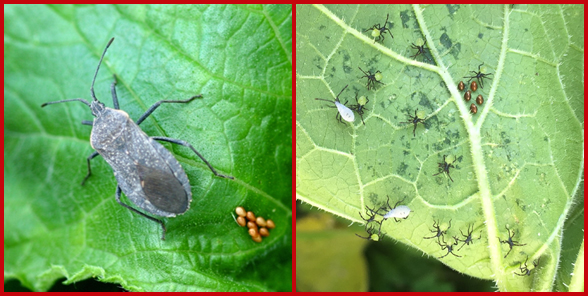
Header 3: The Life Cycle of Squash Bugs
Understanding the life cycle of squash bugs is crucial in effectively managing and controlling their population. Squash bugs go through several stages of development, beginning as eggs before progressing into nymphs and eventually becoming adults.
The life cycle typically starts in early spring when adult squash bugs emerge from overwintering sites such as plant debris or garden soil. The adults mate, and the female lays clusters of bronze-colored eggs on the underside of leaves, near the base of the plant. These eggs are shaped like tiny barrels and are often found in a row or in groups.
After about one to two weeks, the eggs hatch into nymphs, which are small, wingless insects that resemble the adults but lack mature wings. Nymphs go through five molts or instars as they grow, with each molt bringing about changes in body shape and color. As they mature, the nymphs become larger and develop fully formed wings. Finally, the nymphs reach adulthood, and they can begin reproducing and laying eggs to initiate the next generation of squash bugs.
Understanding this life cycle is essential because it allows gardeners to target key stages for control measures. By targeting squash bug eggs or nymphs early in their development, gardeners can prevent the population from reaching damaging levels and protect their valuable squash plants.

Header 4: Examining the Damage Caused by Squash Bugs
Squash bugs can cause significant damage to your beloved plants if left unchecked. These destructive pests primarily target plants in the Cucurbitaceae family, which includes squash, pumpkins, cucumbers, and melons. One of the most telltale signs of a squash bug infestation is the presence of small, bronze-colored eggs on the underside of leaves. It is imperative to inspect your plants regularly, as squash bugs can multiply rapidly and wreak havoc on your garden.
Upon hatching, the nymphs of squash bugs immediately begin feeding on the plant’s tissues, injecting toxic saliva that causes wilting, browning, and necrosis. As they mature, they become increasingly voracious, capable of defoliating entire plants. Moreover, squash bugs are known to transmit bacterial pathogens that can further contribute to the decline of your crops. It is disheartening to witness the aftermath of a squash bug attack, as the once vibrant and flourishing plants become wilted, stunted, and may even die off entirely. Therefore, it is crucial to take prompt action to combat these destructive pests and minimize the damage they inflict on your garden.
Header 5: Natural Ways to Control Squash Bug Infestations
Natural ways to control squash bug infestations are a preferred method for many gardeners who aim to reduce the use of chemicals in their gardens. These methods are not only environmentally friendly but can also be highly effective in managing squash bug populations. One natural approach is the use of beneficial insects that prey on squash bugs. Ladybugs, lacewings, and praying mantises are known to feed on squash bugs, making them valuable allies in the garden. By providing a suitable habitat and avoiding the use of broad-spectrum pesticides, gardeners can attract these beneficial insects and create a balanced ecosystem that keeps squash bug numbers in check.
In addition to beneficial insects, interplanting can also help deter squash bugs. By strategically planting other crops or herbs near squash plants, gardeners can confuse and repel these pests. For instance, planting radishes or marigolds among squash plants can act as a natural repellent. The pungent odors released by these companion plants and their root exudates are believed to affect the feeding and breeding behavior of squash bugs. Moreover, implementing crop rotation can further reduce squash bug infestations. By alternating the planting location of squash plants each year, gardeners can disrupt the life cycle of squash bugs and make it harder for them to find suitable host plants. These natural methods not only serve as effective pest control measures but also contribute to the overall health of the garden ecosystem.
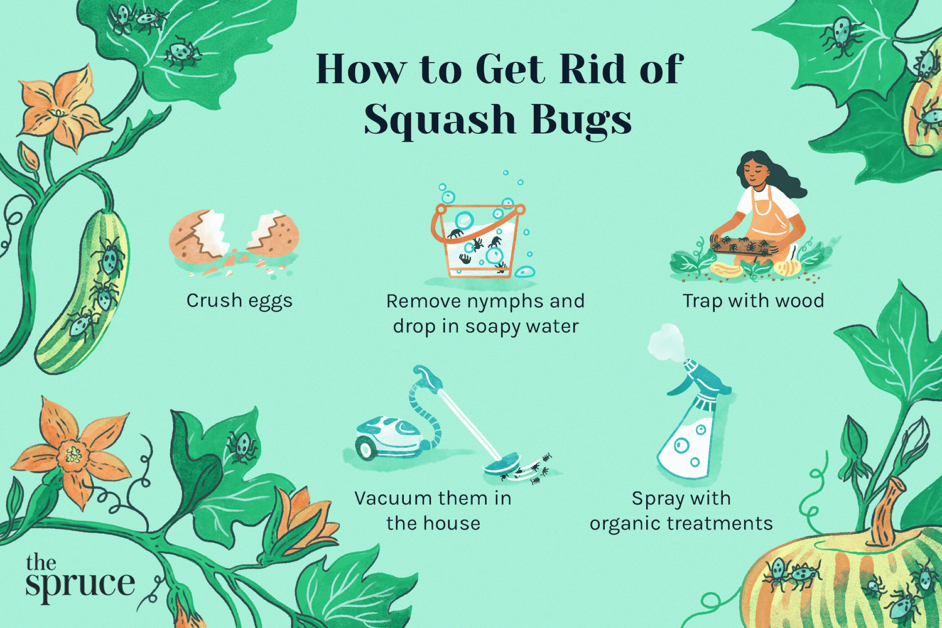
Header 6: Introducing Beneficial Insects for Squash Bug Control
Introducing beneficial insects is one of the most effective and environmentally friendly methods for controlling squash bug infestations. These natural predators play a crucial role in maintaining the balance of pests in your garden and can significantly reduce the population of squash bugs. There are several beneficial insects that are particularly effective in controlling squash bugs.
One such insect is the tachinid fly, which lays its eggs on the backs of squash bugs. The fly larvae then feed on the squash bugs, eventually causing their demise. Another beneficial insect is the spined soldier bug, which preys on a variety of garden pests, including squash bugs. These soldier bugs have beak-like mouthparts that they use to pierce the bodies of squash bugs and suck out their fluids, effectively killing them. Additionally, the minute pirate bugs and ground beetles also feed on squash bugs and can be introduced to your garden to help control their population.
Introducing beneficial insects to your garden can be done through either purchasing them from a reputable supplier or creating a suitable habitat to attract them naturally. Providing suitable shelter, such as planting flowering plants and providing water sources, can help attract these beneficial insects to your garden. However, it’s important to note that beneficial insects should be introduced at the appropriate time and in the proper quantities to ensure their effectiveness. When done correctly, introducing these natural predators can be an efficient and sustainable way to manage squash bug infestations without relying on chemical pesticides.

Header 7: Implementing Crop Rotation as a Defense Against Squash Bugs
Crop rotation is a crucial technique for preventing squash bug infestations in your garden. By rotating your crops each year, you disrupt the reproductive cycle of these pests and reduce their ability to establish themselves in one specific area. Squash bugs are known to target plants in the cucurbit family, such as squash, pumpkins, and cucumbers. Therefore, rotating these crops with plants from other families can effectively break the cycle and deter squash bugs from returning.
The principle behind crop rotation is to avoid planting the same crops in the same location year after year. This practice reduces the buildup of pests and diseases that tend to target specific plants. When it comes to squash bugs, rotating crops can help break their lifecycles by depriving them of their preferred host plants. Instead of providing a consistent food source, crop rotation forces squash bugs to expend more energy searching for suitable plants, reducing their population and limiting their damage. By implementing a crop rotation plan that spans several years, you can effectively manage squash bug infestations and maintain a healthy garden.
Header 8: Proper Garden Maintenance to Prevent Squash Bug Infestations
Proper garden maintenance is key to preventing squash bug infestations and ensuring the health and productivity of your plants. One of the first steps in maintaining a healthy garden is to regularly inspect your plants for any signs of squash bug activity. Look for clusters of bronze-colored eggs, nymphs with grayish-green bodies and black legs, and the presence of adults with their characteristic shield-shaped bodies.
To keep squash bugs at bay, it is important to practice good sanitation in your garden. Remove any dead or damaged plant materials, as these can serve as potential hiding spots for squash bugs and other pests. Additionally, make sure to keep the area around your garden clean and free from debris, as this can create a favorable environment for squash bugs to thrive.
Furthermore, consider implementing a crop rotation strategy to disrupt the life cycle of squash bugs. Since squash bugs are known to overwinter in garden debris and soil, rotating your squash plants to different areas of the garden each year can help break this cycle. This practice also reduces the chances of a squash bug infestation building up in one particular area.
In addition to proper sanitation and crop rotation, maintaining a healthy garden soil is crucial in deterring squash bugs. Ensure that your soil is well-drained and enriched with organic matter, as healthy plants are less susceptible to pest attacks. Regularly test the pH levels and fertility of your soil and make the necessary amendments to create optimal growing conditions.
By following these practices of proper garden maintenance, you can significantly reduce the risk of squash bug infestations and maintain the health and vitality of your squash plants. However, it is important to remain vigilant and monitor your plants regularly, as early detection is key in managing any potential pest problems. In the next section, we will explore the role of companion planting in squash bug control, another effective strategy to protect your crops.
Certainly! Here’s a table outlining Proper Garden Maintenance Practices to Prevent Squash Bug Infestations:
| Maintenance Practice | Description |
|---|---|
| 1. Clean Your Garden Thoroughly | Eliminate habitats that attract squash bugs. Remove debris, fallen leaves, and other hiding spots where squash bugs might take refuge. |
| 2. Apply Neem Oil Solution | Coat your plants with neem oil to suppress the development of squash bug eggs and nymphs. Neem oil acts as a natural insect repellent and disrupts their life cycle. |
| 3. Rotate Crops Annually | By rotating your crops, you can break the squash bug life cycle. Plant different crops in the same area each year to prevent these pests from becoming established. |
| 4. Handpick Squash Bugs and Eggs | Regularly inspect your plants and remove any visible squash bugs or egg masses. This manual control method helps keep their population in check. |
Remember that consistent garden maintenance is key to preventing squash bug infestations and ensuring healthy cucurbit crops!
Header 9: Understanding the Role of Companion Planting in Squash Bug Control
Companion planting is a technique that involves planting different crops next to each other to maximize their benefits and minimize pests. When it comes to squash bug control, companion planting can play a crucial role in disrupting the life cycle of these pests and protecting your precious squash plants.
One of the most effective companion plants for squash bug control is the marigold. Marigolds contain a compound called limonene, which repels squash bugs and other insects. By planting marigolds alongside your squash plants, you create a natural barrier that deters squash bugs from infesting your crops. Additionally, marigolds attract beneficial insects like ladybugs and lacewings, which are natural predators of squash bugs. These beneficial insects help keep the population of squash bugs in check, reducing the risk of severe infestations.
Another beneficial companion plant for squash bug control is nasturtium. Nasturtiums have a pungent scent that repels squash bugs, making them an excellent choice to plant alongside your squash. Additionally, nasturtiums act as a trap crop, luring squash bugs away from your main squash plants. The pests are attracted to the nasturtiums and will lay their eggs there instead of on your squash plants. This strategy helps protect your squash crops and allows you to easily monitor and control the squash bugs on the nasturtiums.
By implementing companion planting with marigolds and nasturtiums, you can enhance your squash bug control efforts and create a more balanced ecosystem in your garden. However, it is important to note that companion planting alone may not completely eliminate squash bug infestations. It should be used in conjunction with other integrated pest management strategies for optimal results. In the following sections, we will explore more techniques and approaches to combat squash bugs and protect your squash plants.
Header 10: Organic Insecticides for Combatting Squash Bugs
Organic insecticides offer gardeners a safe and effective way to combat squash bugs without the use of harmful chemicals. These natural alternatives not only help control the infestation but also protect the environment and the health of both humans and beneficial insects.
One popular organic insecticide for squash bug control is neem oil. Derived from the seeds of the neem tree, this natural pesticide disrupts the feeding and mating behavior of squash bugs, ultimately leading to their demise. Neem oil is also effective against the nymphs, preventing them from reaching adulthood and causing further damage to your squash plants.
Another organic option is pyrethrin, a botanical insecticide extracted from chrysanthemum flowers. Pyrethrin acts as a powerful insect repellent, deterring squash bugs from infesting your plants. It also has a short residual period and breaks down quickly in the environment, making it a suitable choice for organic gardening.
When using organic insecticides, it is crucial to follow the manufacturer’s instructions for application and dosage. Keep in mind that these natural pesticides may require multiple applications to effectively control the squash bug population. By incorporating organic insecticides into your pest management plan, you can protect your squash plants while maintaining a healthy and environmentally-friendly garden.
Header 11: Timing is Key: When to Apply Insecticides for Squash Bug Control
When it comes to controlling squash bugs, timing is crucial in ensuring the effectiveness of insecticide applications. These pests can cause extensive damage to your squash plants if left unchecked, so knowing when to apply insecticides is essential for effective control.
Ideally, it is best to apply insecticides when squash bugs are in their early nymph stages. This is when they are most susceptible to treatment and before they have had a chance to lay eggs and multiply. By targeting the nymphs, you can significantly reduce the population and prevent further infestation.
To determine the appropriate timing for insecticide application, monitor your plants regularly for signs of squash bug activity. Look for clusters of eggs, adult bugs congregating on the undersides of leaves, or wilting and discoloration of the plant. Once you notice these signs, it’s time to take action and apply insecticides promptly.
Remember that timing alone is not enough for effective control. To maximize the efficacy of your insecticide treatment, it is crucial to follow the instructions provided by the manufacturer. Use the recommended dosage, application method, and adhere to any reapplication intervals specified on the label. It is also important to consider the weather conditions and avoid applying insecticides during windy or rainy days as it can reduce the effectiveness of treatment.
By timing your insecticide applications correctly and closely monitoring your squash plants, you can effectively combat squash bug infestations and protect your precious crops. Stay vigilant and consistently follow a proactive approach in managing these pests to ensure a healthy and productive vegetable garden.
Certainly! Here’s a table outlining Timing is Key: When to Apply Insecticides for Squash Bug Control:
| Timing | Description |
|---|---|
| Early Morning or Late Evening | Apply insecticides during these times for optimal effectiveness. Sprays will dry more slowly, resulting in better coverage of the vegetation. |
| Egg Hatching | Spray just as the squash bug eggs are hatching. The small nymphs are more easily controlled at this stage. |
| Weekly Monitoring | Begin monitoring plants weekly for initial signs of squash bug frass (sawdust-like material) at entrance holes in the stems. This usually corresponds to mid-June as the start of adult flight. Very early signs of larval feeding indicate that other eggs will be hatching soon. |
| Multiple Foliar Sprays | Apply multiple foliar sprays for extended periods of control. Ensure sprays penetrate the plant canopy and thoroughly cover the top and underside of leaves, fruits, and vines. |
| Under Leaves and Stems | Be sure to spray underneath the leaves, where most squash bugs are found. |
Remember that timely application of insecticides and thorough coverage are essential for effective squash bug control!
Header 12: Using Physical Barriers to Protect Your Squash Plants
Using physical barriers is an effective way to protect your squash plants from squash bugs. By installing barriers around your plants, you can prevent these pests from accessing and damaging your valuable crops. Physical barriers can include floating row covers, netting, or cages that cover the plants and create a barrier that squash bugs cannot penetrate.
Floating row covers are a popular choice for protecting squash plants. These lightweight covers allow sunlight, air, and water to reach the plants while keeping squash bugs out. When using floating row covers, it is important to secure the edges tightly to prevent any gaps that squash bugs could crawl through. It is also essential to regularly check the covers for signs of wear or damage, as even a small hole can provide an entry point for pests. Netting or cages can also be effective physical barriers, providing a physical barrier that keeps squash bugs away from the plants. These barriers can be used in combination with other pest control methods for maximum effectiveness.
Header 13: Understanding the Importance of Hygiene in Squash Bug Management
Maintaining good hygiene practices in your garden is crucial when it comes to managing squash bug infestations. These pests thrive in dirty and cluttered environments, making proper cleanliness an essential aspect of squash bug management. Regularly removing plant debris, weeds, and fallen leaves from your garden helps eliminate potential hiding places and breeding grounds for squash bugs. Additionally, keep the area around your squash plants clean and free from any decaying matter, as this can attract pests.
Another important aspect of hygiene in squash bug management is the regular inspection of your plants. Take the time to closely examine your squash plants, paying attention to the undersides of leaves, stems, and fruits. Squash bugs have a tendency to hide in these areas and can often go unnoticed if not properly inspected. Early detection is key in preventing severe infestations, so be diligent in your monitoring efforts.
By maintaining good hygiene practices and regularly inspecting your squash plants, you can greatly reduce the risk of squash bug infestations. However, it is important to remember that hygiene alone may not be sufficient in completely eradicating these pests. In the following sections, we will explore additional strategies and techniques to effectively control squash bugs and protect your squash plants. Stay tuned for more information on natural ways to control squash bug infestations and other valuable management practices.
Header 14: Dealing with Squash Bugs in Different Stages of Growth
When dealing with squash bugs in different stages of growth, it is important to understand their life cycle and behavior in order to effectively control and eliminate them from your garden. Squash bugs go through several stages of growth, from egg to nymph to adult, each with its own challenges for management.
Eggs are typically laid on the underside of squash leaves in clusters. These small, bronze-colored eggs are laid in a neat pattern and can be easily spotted with close observation. It is recommended to check the undersides of leaves regularly and remove any egg clusters found. Simply scraping them off with your fingernail or a blunt knife can greatly reduce the number of squash bugs in your garden.
As nymphs, squash bugs are small, wingless insects with gray or brown bodies and red legs. They undergo several molts as they grow, shedding their exoskeletons to accommodate their increasing size. During this stage, it is crucial to monitor your plants closely and promptly remove any nymphs you come across. Nymphs can be easily squashed or dropped into a container filled with soapy water to eliminate them effectively. By regularly checking for and addressing the presence of squash bug nymphs, you can prevent their population from quickly growing and causing significant damage to your squash plants.
Header 15: The Role of Pruning in Squash Bug Control
Pruning is an important practice in the control of squash bugs in your garden. By removing the affected plant parts, you can effectively limit the spread and severity of infestations. Squash bugs often lay their eggs on the undersides of leaves, and pruning allows you to remove these eggs before they hatch and cause further damage to your plants.
When pruning squash plants, it is crucial to focus on removing any leaves or stems that show signs of squash bug activity. Look for eggs, nymphs, or adult bugs on the plant and carefully remove these parts. Be sure to dispose of the pruned material properly to prevent any remaining eggs or bugs from reestablishing in your garden.
Pruning can also help improve air circulation and sunlight exposure to your plants, which can make them less attractive to squash bugs. By maintaining a well-ventilated and properly trimmed plant, you create a less favorable environment for squash bugs to thrive.
In addition to pruning, it is important to implement other integrated pest management strategies such as crop rotation, companion planting, and proper garden maintenance to maximize the effectiveness of squash bug control. By combining these practices, you can create a holistic approach to protect your squash plants and ensure a healthy harvest.
Header 16: Monitoring and Early Detection of Squash Bug Infestations
Monitoring and early detection are essential components of effective squash bug management. By regularly checking your plants for signs of infestation, you can catch squash bugs in their early stages and prevent them from causing extensive damage to your crops.
One of the first things you can do is to closely examine your squash plants for any visible signs of squash bug activity. Look for adult squash bugs, which are about 5/8 inch in length and have a brown or grayish-black body. They often congregate along the stems or on the underside of leaves. Additionally, keep an eye out for their eggs, which are small and copper-colored and can be found in clusters on the undersides of leaves.
When conducting your inspections, pay attention to any wilting or yellowing of leaves, as these may indicate feeding damage caused by squash bugs. You may also notice small, discolored spots on the leaves, which are caused by the bugs’ feeding and can eventually lead to complete leaf wilting. By regularly monitoring your plants and promptly addressing any signs of squash bug infestation, you can minimize the damage and protect the health of your squash plants.
For more information watch the below video.
How do I monitor for squash bug infestations?
To monitor for squash bug infestations, regularly inspect your plants for signs of the bugs, such as egg clusters or adult bugs. You can also use traps or sticky cards to catch and identify squash bugs.
What are some early detection methods for squash bug infestations?
Early detection methods for squash bug infestations include inspecting the undersides of leaves for eggs, using monitoring traps, and observing the presence of adult squash bugs on your plants.
Why is early detection of squash bug infestations important?
Early detection of squash bug infestations is important because it allows you to take immediate action to control the infestation before it spreads and causes significant damage to your squash plants.
Can I use any specific techniques to detect squash bug infestations early?
Yes, you can use techniques such as regularly inspecting your plants for signs of squash bugs, using monitoring traps, and keeping a close eye on the undersides of leaves where squash bug eggs are often laid.
What should I do if I detect a squash bug infestation?
If you detect a squash bug infestation, you should take immediate action to control the infestation. This can include manually removing the bugs, using natural or organic insecticides, or introducing beneficial insects that feed on squash bugs.
How often should I monitor my squash plants for squash bug infestations?
It is recommended to monitor your squash plants for squash bug infestations at least once a week during the growing season. However, if you notice any signs of infestation, it is best to increase the frequency of monitoring.
Are there any specific times of the day that I should monitor for squash bug infestations?
Squash bugs are typically more active during the early morning or late afternoon. Therefore, it is advisable to conduct your monitoring for squash bug infestations during these times for better chances of detection.
What are the benefits of monitoring and detecting squash bug infestations early?
Monitoring and detecting squash bug infestations early allow you to intervene and control the infestation before it becomes severe. This helps prevent significant damage to your squash plants and ensures their overall health and productivity.
Can I prevent squash bug infestations by monitoring and early detection alone?
While monitoring and early detection are crucial for managing squash bug infestations, it is also important to implement other preventive measures, such as proper garden maintenance, crop rotation, and companion planting, to minimize the risks of infestation.

Nicole Burke is a dynamic writer at SouthElMonteHydroponics, fueled by her passion for horticulture and environmental sustainability. Armed with a degree in Environmental Science from a renowned institution, Nicole’s expertise lies in hydroponic gardening, organic farming, and biodiversity conservation. Her insatiable curiosity and love for nature drive her to explore innovative techniques in hydroponics, seeking to revolutionize the way we grow crops in urban environments. Nicole’s writing reflects her deep commitment to promoting eco-conscious practices and fostering a deeper connection between humans and the natural world. Through her engaging storytelling, she inspires others to embrace sustainable living and harness the power of hydroponics for a greener future.

